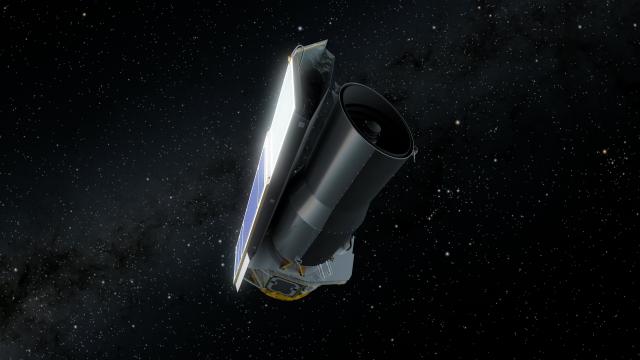When something drifts off into space, it’s usually done and dusted. A private company, however, is saying not so fast to manmade objects in space. It has plans to revive the legendary space telescope more than two astronomical units, or 297 million km away from Earth.
You may never have heard of the infrared Spitzer Space Telescope, but you’ve probably heard of some of the amazing discoveries it helped make over its 16-year lifespan; Earth-sized potentially watery exoplanets, scenes of planetary formation and beautiful nebula giving birth to new stars. NASA only planned to use Spitzer for five years, but all of its instruments functioned for seven years before it ran out of liquid hydrogen as a cooling agent. Still, Spitzer continued sending back limited data for another nine years before an overheating issue led to NASA saying goodbye to the Spitzer in January 2020. Now it drifts in orbit around the Sun.
But those science nerds might get a chance to revive Spitzer. Rhea Space Activity, a private space company (what a world) is working with some big names to bring the telescope back online. They call the mission Spitzer Resurrector. From Ars Technica:
The plan is rather audacious, but it has some serious backers, including the Smithsonian Astrophysical Observatory, the Johns Hopkins University Applied Physics Laboratory, Blue Sun Enterprises, and Lockheed Martin.
“When it comes to robotic space servicing, this would be the most ambitious thing ever done,” said Shawn Usman, an astrophysicist who is the founder and chief executive of Rhea Space Activity, in an interview with Ars. “I mean, it is literally sending a satellite to the other side of the Sun to resurrect the last Great Observatory. So I think it would be pretty ambitious, but it’d be really great if we could pull it off.”
The “Spitzer Resurrector” mission would be a small spacecraft that could fit into a 1-metre-by-1-metre box and be ready to launch as soon as 2026, Usman said. It would then take about three years to cruise to the telescope, during which time the spacecraft will make observations of solar flaring.
“We plan to be busy right from the start of the mission,” said Howard Smith, an astronomer at the Centre for Astrophysics, which is operated by Harvard University and the Smithsonian, who is involved in the proposed rescue flight.
Once the resurrector spacecraft reaches the telescope, it would fly around at a distance of 50 to 100 km to characterise Spitzer’s health. Then it would attempt to establish communications with the telescope and begin to relay information back and forth between the ground and telescope. This would allow scientists to restart observations.
Rhea is a small company, with fewer than 10 employees, but it is seeking the entire $US350 million grant for the mission from the U.S. Space Force. It would take the resurrector three years to even reach the Spitzer, so we may not make contact with the telescope before the end of the decade. And when we do get there, there is no guarantee the Spitzer will be in proper working order. Still, there’s a lot of smart people buying into this mission, with NASA reportedly ready to sign off on the rescue attempt.
